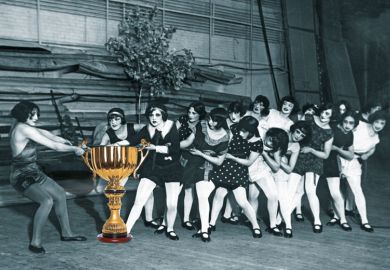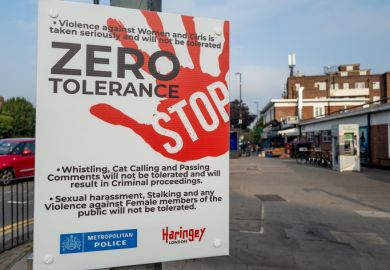The UK’s main funder for engineering and physical sciences received just five applications for large grants from female principal investigators in 12 years, according to a new report.
Women also had a significantly lower success rate in grant applications over most of the period when the actual value of awards was taken into account, the Engineering and Physical Sciences Research Council found.
An analysis of grant data by the council also suggested that as well as tending to apply for lower-value grants, female project leaders were also “less likely to be successful” when they did go for bigger awards.
The findings come from a study of the gender balance of grant applications and awards by the EPSRC from 2007 to 2019, which showed that overall the success rate for men and women became equal in 2015-16 and had stayed “largely within 2 percentage points of each other over the last few years”.
However, when success rates were analysed by award value a different picture emerged, with the share of funding won being “consistently lower” for women up to a gap of 22 percentage points in 2016-17 (although this was because of “exceptionally large grants” won by male PIs that year).
For large grants of more than £10 million, the study revealed that the EPSRC received just five applications from female PIs over the whole period compared with 80 from male team leaders. According to the report, in April 2019 there were 420 “active” female PIs in the field, representing 17 per cent of all those working in the discipline.
Further data in the report show “women typically and consistently applying for smaller value grants” with a big gap in most years between the largest value application by men and women, even when grants over £20 million were not counted.
In nine out of the 12 years, the largest grant that had been requested by a male PI was awarded, but the same only happened for female PIs in four years over the period.
“Where the largest grant by value applied for was not awarded, the scale of the difference in value between that grant and the next highest value grant that was awarded varies between the genders,” the report adds.
It says that while this data point could be “an extreme outlier”, it suggests “that where female applicants apply for a larger amount of money, they are less likely to be successful”.
In a statement released alongside the report, the EPSRC said that it would be running a series of surveys with its research community to gather more information about the “personal experiences of applying for large grants as well as views on potential causal factors for the trends seen”. The results would inform any further action it took in the area, it said.
Alison Wall, the council’s deputy director for equality, diversity and inclusion, said: “Under-representation of women remains one of EPSRC’s biggest equality, diversity and inclusion challenges, and the report illustrates that there is still work to do in ensuring our portfolio is diverse, inclusive and enabling everyone to thrive.”
Register to continue
Why register?
- Registration is free and only takes a moment
- Once registered, you can read 3 articles a month
- Sign up for our newsletter
Subscribe
Or subscribe for unlimited access to:
- Unlimited access to news, views, insights & reviews
- Digital editions
- Digital access to THE’s university and college rankings analysis
Already registered or a current subscriber?







